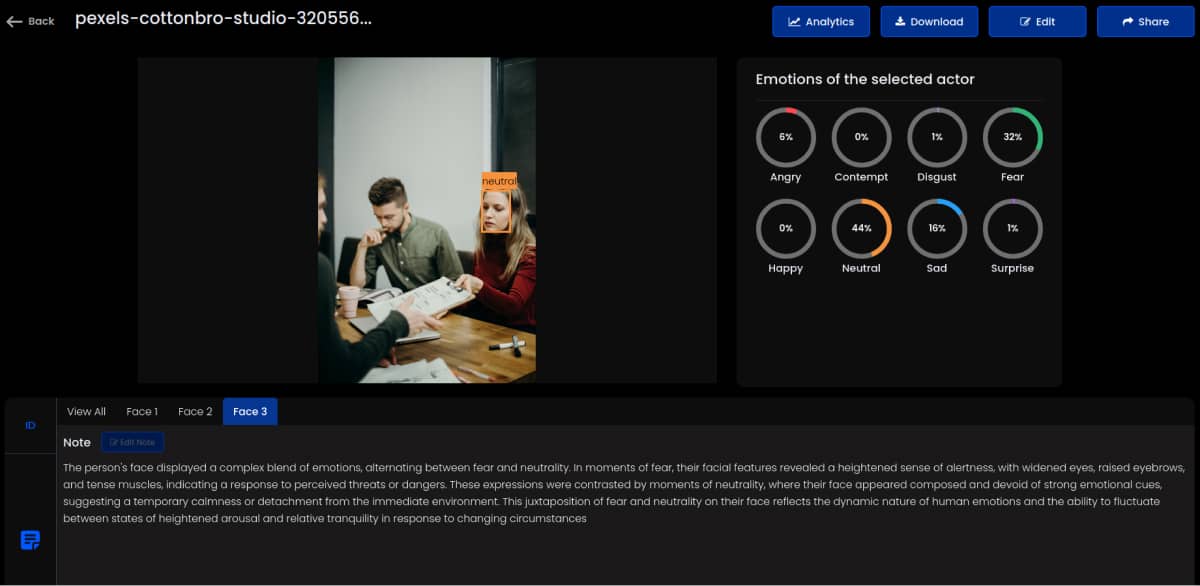
Analyzing Emotions and Personalities in Video Interviews
In the realm of human interaction, understanding emotions and deciphering personalities play pivotal roles in fostering effective communication. With the advent of technology, particularly the prevalence of video interviews, researchers and psychologists are now exploring innovative ways to analyze and interpret emotional expressions and personality traits. In this blog, we delve into the fascinating world of video interview analysis, exploring how emotions and personalities can be decoded from the visual and auditory cues presented in these interviews.
Nonverbal communication, including facial expressions, body language, and tone of voice, often conveys more information than words alone. In a video interview setting, these nonverbal cues become valuable indicators of an individual's emotional state and underlying personality traits. Researchers leverage advanced technologies, including computer vision and machine learning, to meticulously analyze these cues and extract meaningful insights.
Facial expressions are windows to the soul, reflecting a person's emotions and reactions. Through video analysis, researchers can track micro-expressions, subtle changes in facial muscles that last only fractions of a second. These micro-expressions provide clues about a person's true feelings, even when they try to conceal them. Emotion AI technologies like facial recognition software help in identifying and categorizing different emotional expressions, such as joy, sadness, anger, or surprise.
The way individuals move and position their bodies during an interview can reveal a wealth of information about their personalities. Gestures, posture, and overall body language contribute to the analysis of emotional states and personality traits. For instance, someone who leans forward and maintains eye contact might be perceived as engaged and confident while fidgeting or avoiding eye contact could indicate nervousness or discomfort.


Delineate the variance in exhibiting various emotions through an interview.
Beyond visual cues, the analysis of audio data plays a crucial role in decoding emotions and personalities. The tone of voice, pitch variations, and speech patterns can convey a person's emotional state, level of confidence, and even certain personality traits. NLP algorithms analyze verbal communication, identifying patterns that offer insights into an individual's emotional well-being. The complexity of human emotions and personalities requires sophisticated tools to analyze and interpret the vast amount of data gathered from video interviews. Machine learning algorithms, powered by vast datasets, enable the development of models capable of recognizing patterns in facial expressions, body language, and speech. These models continuously improve their accuracy as they learn from more data, making them invaluable in the nuanced task of decoding emotions and personalities.
The application of video interview analysis extends beyond academic research. Businesses and organizations are increasingly incorporating these insights into their hiring processes to assess candidates more comprehensively. Understanding emotional intelligence and personality traits in potential hires can lead to better team dynamics, increased productivity, and improved employee satisfaction.
In conclusion, video interview analysis represents a groundbreaking frontier in our understanding of human emotions and personalities. By harnessing the power of technology, researchers, businesses, and psychologists can gain deeper insights into the intricacies of human interaction. As these tools continue to evolve, it is essential to navigate the ethical landscape carefully, ensuring that the benefits of this technology are realized responsibly and with respect for individuals' privacy and dignity.
Discover the capabilities of AI-powered emotion analysis through our sample videos.